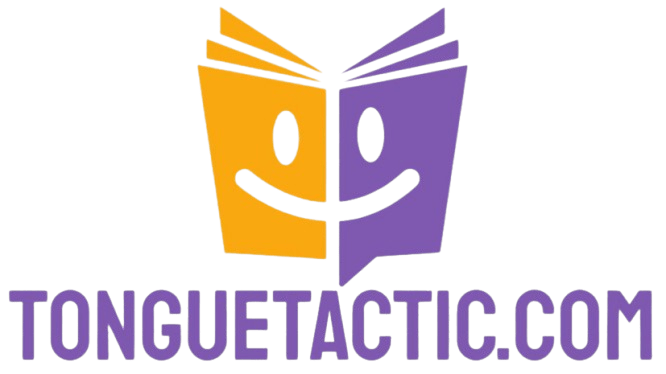how to use music for language practice
Get ready to explore how music can supercharge your language learning journey! Music transcends mere entertainment; it serves as a potent instrument for language acquisition.
By harnessing the rhythm, melody, and lyrics of songs, you can enhance your vocabulary and refine your pronunciation while grasping grammar in an enjoyable and engaging manner.
This article delves into selecting the right music, effective techniques for integrating it into your practice, and strategies to maximize its benefits.
Prepare to transform your language learning experience through the universal language of music!
Contents
- Key Takeaways:
- Choosing the Right Music for Language Practice
- Techniques for Using Music in Language Practice
- Maximizing the Benefits of Music for Language Practice
- Frequently Asked Questions
- How can music be used for language practice?
- Can any type of music be used for language practice?
- What are some ways to practice listening skills with music?
- How can music help with pronunciation?
- Is it beneficial to actively sing along with a song for language practice?
- Can music be used for language practice in a group setting?
Key Takeaways:

Music is an effective and enjoyable tool for practicing language skills.
Consider factors such as genre, speed, and familiarity when choosing music for language practice.
Utilize techniques like listening, translation, and vocabulary to maximize the benefits of using music for language learning.
Why Music is an Effective Language Learning Tool
Music stands as a remarkable ally in your journey of language learning, elevating your vocabulary acquisition and honing your pronunciation skills.
It also enhances your comprehension abilities. By weaving music into your educational approach, you cultivate a vibrant classroom atmosphere that naturally boosts student engagement and fosters cultural awareness.
When you incorporate authentic resources like Spanish songs, you can forge a deeper emotional connection to the language. This transforms the learning process into an enjoyable and effective experience.
Research underscores that music enhances thinking skills, making it an essential tool for language educators striving to enrich their students learning journeys.
The melodic components, including rhythm and the intonation of speech, play a crucial role in helping you grasp the subtleties of pronunciation while expanding your vocabulary.
For example, when you listen to or sing along with songs, those catchy melodies make it significantly easier to recall new words and phrases.
Educational tools like lyrics training apps and music-based games are particularly effective, as they not only sharpen your listening skills but also offer valuable context and cultural insights.
By adopting strategies such as integrating music videos or involving students in songwriting activities, teachers can immerse you further in the language, strengthening your understanding and appreciation of diverse cultural backgrounds.
Choosing the Right Music for Language Practice
Select music that maximizes your language practice. Choosing suitable songs from popular artists like Marc Anthony or Alvaro Soler can enhance emotional learning and deepen cultural understanding.
Thematic songs and thoughtfully curated music videos cater to diverse learning styles, keeping you engaged as you practice vocabulary and pronunciation in a delightful setting.
The emotional resonance of particular songs can greatly impact your motivation and retention, making the learning experience not only effective but also enjoyable.
Factors to Consider
Consider these key factors to enhance your learning when selecting music for effective language practice.
- First and foremost, think about the complexity of the lyrics. Simpler songs may be beneficial for beginner learners, while more intricate lyrics can provide a stimulating challenge for advanced students.
- The emotional connection you have to specific genres or artists can significantly impact engagement and motivation throughout the learning process.
- Incorporating interactive activities like karaoke or song analysis can further enrich the experience, making it lively and dynamic.
- Cultural relevance fosters an inclusive atmosphere, allowing students to explore and appreciate diverse backgrounds.
- Utilizing songs that resonate with your life can bridge gaps, making language learning feel more relatable and enjoyable.
- Rhythm-based activities or group discussions aligned with musical themes can enhance comprehension and retention.
Ultimately, your thoughtful selection of music will elevate language skills and cultivate a sense of community among learners.
Start today and discover how fun learning a new language can be with music!
Techniques for Using Music in Language Practice

Incorporating music into your language practice can enhance language immersion and improve your vocabulary, pronunciation, and listening skills significantly.
A fun method is lyrics training. You fill in the blanks of song lyrics, which helps reinforce vocabulary.
Analyzing song lyrics enhances your grasp of grammar and culture, enriching your language abilities.
Use playlists and music videos on platforms like Spotify and YouTube for a variety of learning resources.
Lyrics and Translation
Using lyrics and translations helps you explore vocabulary and cultural nuances, boosting your language skills.
Engaging with the lyrics reveals idioms and dialects often missed in textbooks. This method ensures you understand vocabulary within context.
Learning the emotional undertones fosters a personal connection to the culture. Translating these feelings develops appreciation for the artistic side of language.
Listening and Pronunciation
Listening to music is a great way to improve your fluency and language skills. Actively engaging with songs helps you practice rhythm and intonation, which are vital for pronunciation. You can also explore how to use videos for language learning to further enhance your skills.
Your emotional connection to certain songs can motivate you to practice more, creating a positive learning atmosphere.
Practicing listening exercises, like repeating lyrics or singing along, refines your pronunciation while deepening your understanding of the language.
These activities can fit various genres and styles, making it easier to find what works for you. Sharing songs with friends creates a fun, collaborative learning environment.
This mix of emotional engagement and practical exercises can greatly boost your confidence in language learning!
Writing and Vocabulary
Writing activities related to music enhance vocabulary and make learning enjoyable. Linking language with melodies motivates you to explore different writing styles.
For example, rewriting song lyrics is a playful way to challenge your creativity while working on vocabulary. This practice deepens your appreciation for language’s artistic nuances.
Working in groups to create original songs encourages dialogue and teamwork, reinforcing grammar in a lively setting. These activities make language rules more tangible and fun!
Maximizing the Benefits of Music for Language Practice

Maximizing music’s benefits for language practice requires a smart approach. Balance consistency with variety to keep learning exciting!
By regularly weaving music into the language immersion process, you can significantly boost your engagement. This transforms learning into a more enjoyable and effective journey.
Introduce a rich mix of musical genres, artists, and themes to cater to different learning styles. This keeps your interest alive over time and creates an exciting atmosphere that motivates you to learn!
This approach deepens your cultural awareness and enhances your exposure to the language.
Consistency and Variety
Maintaining consistency and variety in your music-based language practice is crucial for keeping student engagement high. This maximizes emotional learning.
Weaving music into daily routines crafts an immersive environment that allows you to feel comfortable with the language. A diverse mix of musical styles and themes prevents monotony and encourages exploration of different cultural contexts.
This not only enhances language skills but also enriches your overall learning experience. Consider curating playlists that blend familiar favorites with new genres think pop, jazz, classical, and world music.
Each week, spotlight a different cultural theme or artist. This lets learners uncover language nuances through varied lyrical structures and rhythms.
Incorporate engaging activities, such as analyzing song lyrics this means breaking down the meaning and structure of the lyrics. It keeps students active and engaged.
Inviting students to share their music preferences fosters a collaborative atmosphere. This ensures their voices are heard, making them integral contributors to the learning journey.
Incorporating Music into Daily Language Learning
Incorporating music into your daily routines can significantly enhance your engagement and motivation. This transforms the process into something enjoyable and effective.
Utilize interactive activities like karaoke, music-based games, and listening comprehension exercises. These elevate traditional language practice to a dynamic experience.
For instance, create playlists tailored to specific themes. This encourages exploration of vocabulary related to different topics through the lens of music.
Engaging in songwriting or analyzing lyrics can spark creativity while reinforcing grammar and vocabulary. Discussing song lyrics cultivates critical thinking and nurtures community as you share insights with peers.
These music-infused strategies energize lessons and provide invaluable context, bridging the gap between language and culture. This holistic approach caters to various learning styles, ensuring you feel included and motivated on your language journey.
Tracking Progress and Adjusting Techniques
Tracking your progress and adjusting techniques in music-based language practice is essential for effective skill development.
This dynamic approach allows educators to create a more personalized learning environment that fosters enthusiasm and retention.
Incorporating your song choices significantly enhances motivation, turning lessons into enjoyable experiences.
Using digital tools, such as apps or online platforms, provides real-time feedback. This allows instructors to gauge your language comprehension and musical engagement accurately.
By analyzing performance patterns, teachers can refine their curriculum to stay aligned with your progress. Ultimately, these strategies lead to deeper language acquisition, as you are more likely to engage when your voice and preferences are acknowledged.
Frequently Asked Questions

How can music be used for language practice?
Music helps with language practice. You can listen to songs in your target language, understand the lyrics, sing along, and even explore how to use music for language practice by translating them into your native language.
This approach boosts vocabulary, pronunciation, and overall language comprehension.
Can any type of music be used for language practice?
Yes, any music can work! Choose songs in the target language that you enjoy.
What are some ways to practice listening skills with music?
One effective method is to listen to a song and write down the lyrics. You can also fill in the blanks or answer questions about the song.
How can music help with pronunciation?
Music improves pronunciation by letting you hear and imitate natural sounds.
It aids in recognizing and remembering the correct pronunciation of words.
Is it beneficial to actively sing along with a song for language practice?
Absolutely! Singing along enhances pronunciation, helps memorize vocabulary and grammar, and boosts your confidence in speaking.
Can music be used for language practice in a group setting?
Yes! Using music in a group is a fun way to practice skills.
You can discuss lyrics, play games, or even have karaoke sessions in your target language.






